Fun Facts About Sunflowers
7 Things to Know About This Iconic Flower
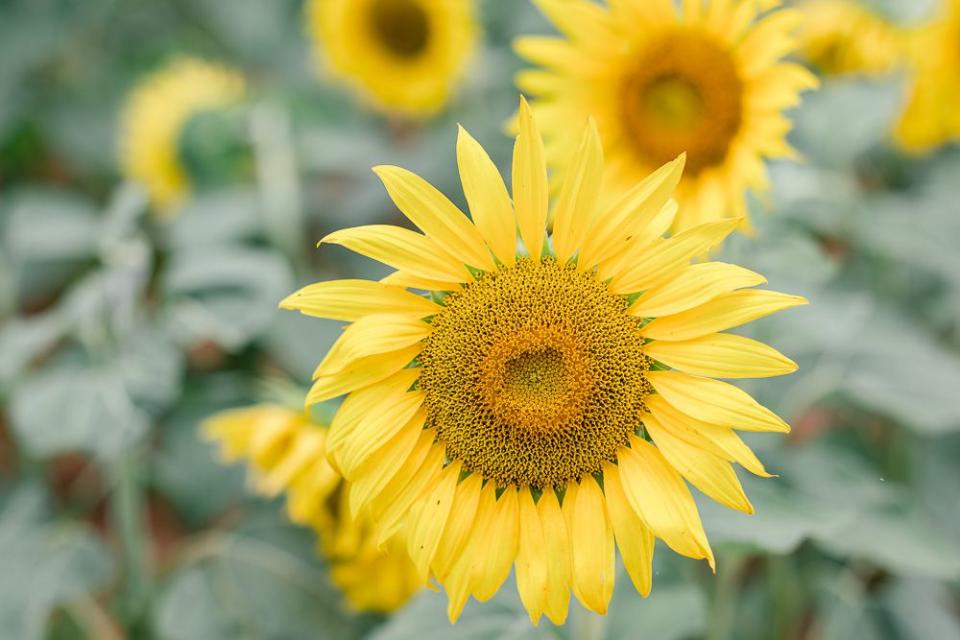
Fact checked by Nike OrisamoluReviewed by Debra LaGattuta
The large and colorful flower heads of the common sunflower (Helianthus annuus) have been known to make us smile. They stand tall—taller than most other garden bloomers—and always seem to perk up our mood.
While these cheerful flowers are certainly a familiar sight, you might not realize that sunflowers can grow upwards of 12 feet and that all of the 52 sunflowers species are native to North America and Mexico. Here is a collection of fun facts to impress your gardening friends.
Raising Sunflowers
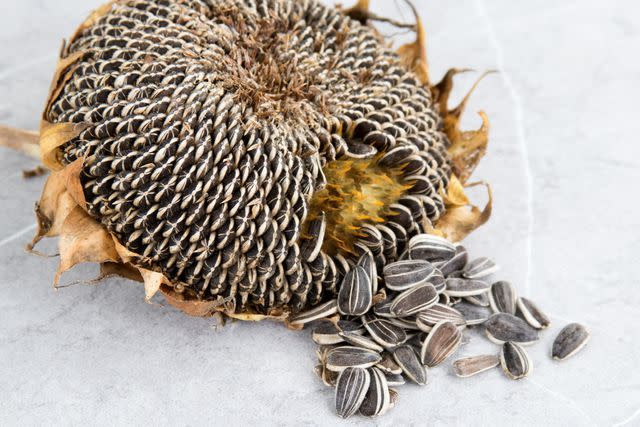
The Spruce / Colleen & Shannon Graham
Sunflowers are fast-growers and very easy to start from seed. Here are a few general tips for growing them:
Sow sunflower seeds directly in the garden after the last frost date in your region; read the seed packet for spacing and depth recommendations.
Sow the seeds (or plant transplants) in an area that receives full sun; sunflowers require at least six to eight hours of sun per day.
Make sure the soil is well-drained; they don't tolerate soggy soil.
Sunflowers are heavy feeders. Fertile soil high in organic matter will produce strong and healthy plants.
Water plants deeply but infrequently when the plants are young. They tolerate dry conditions once they are established.
If you're growing a tall variety, consider staking them so they don't topple over in a strong wind, as the large flower heads become quite heavy. If possible plant them in a location that offers some protection from the wind.
Harvest the sunflower seeds when the sunflowers have died back completely and the back sides of the flower disks are brown.
History
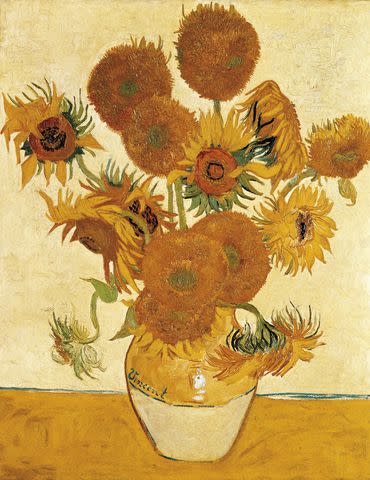
Dea / M. Carrieri / Getty Images
Vincent van Gogh: Vase with Fifteen Sunflowers, Oil on Canvas, 93x73 cm, Painted in Arles, France, August, 1888. The National Gallery, LondonSunflowers are native to the Americas. The sunflower was a common crop among native American tribes throughout North America.
Historical evidence suggests the plant was cultivated by native Americans around 3000 BC, and some archaeologists suggest that sunflowers might have been domesticated before corn.
Sunflowers are among the most iconic flowers on canvas—first and foremost Vincent van Gogh’s famous sunflowers which he painted in Arles in the south of France in 1888 and 1889. This was several years after the impressionist painter Claude Monet depicted a bouquet of sunflowers that came from his own garden, a work for which he received much praise from the critics.
The sunflower is the state flower of Kansas and the national flower of Ukraine.
Sunflowers at a Glance
Botanical Name: Helianthus spp.
Plant Family: Aster (Asteraceae)
Plant Type: Annual or perennial
Mature Size: 3–12 ft. tall, 1.5–3 ft. wide
Sun Exposure: Full
Hardiness Zones: 2-11 (USDA), depending on the species
Native Area: North America
Sunflower Anatomy
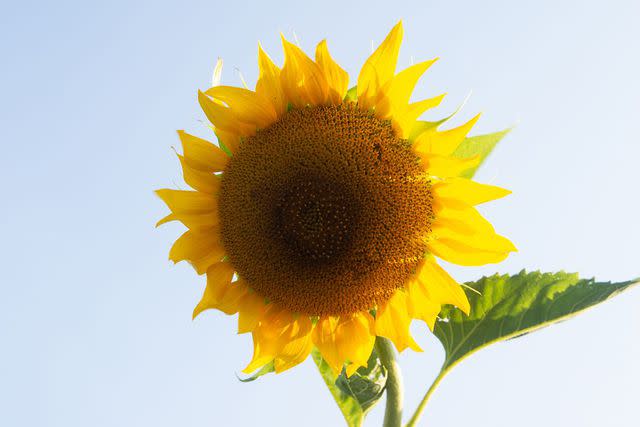
The Spruce / Pheobe Cheong
The giant, disk-like flower head is comprised of many tiny blooms (disk florets) in the center that turn into seeds after the bloom.
The outer petals are known as ray florets.
Although many sunflowers can self-pollinate when pollen is spread by the wind from one floret of the disk to another, the presence of pollinating insects, especially bees, that spread the pollen leads to much higher pollination rates.
Sunflowers typically grow between 5 and 12 feet tall (not counting cute little dwarf sunflowers).
Fun Facts
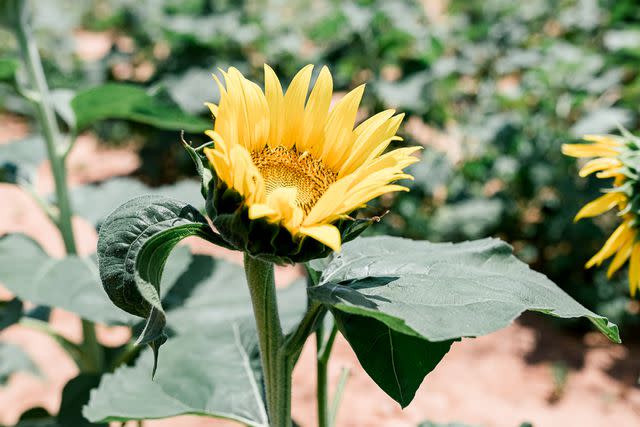
The current world record for the tallest sunflower was set in 2014, at a towering 30 feet, 1 inch, grown by Hans-Peter Schiffer in Germany.
Sunflowers are bee magnets; each flower head produces a large volume of pollen and nectar that lures in bees and other pollinators.
At the bud stage, sunflowers exhibit a unique trait called heliotropism, where the sunflower face turns toward the sun at all times throughout the day, starting the day facing east and ending it facing west.
There are both annual and perennial sunflowers the come back every year.
Not all sunflowers have sunshine-yellow petals; hybrids come in a range of other colors such as golden yellow, pale yellow, cream, white, burgundy, rust, and even a pinkish tone.
Many varieties of sunflowers are available to gardeners—some of them produce striped or bi-colored petals
The French word for sunflower is tournesol, which translates literally to "turned sun," referring to the plant's ability to turn itself to face the sun.
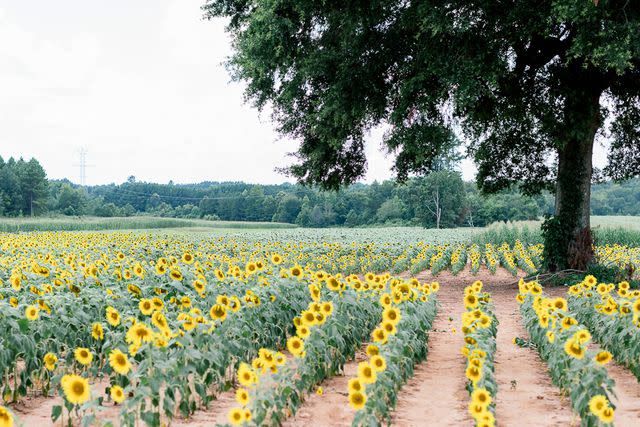
Read the original article on The Spruce.

